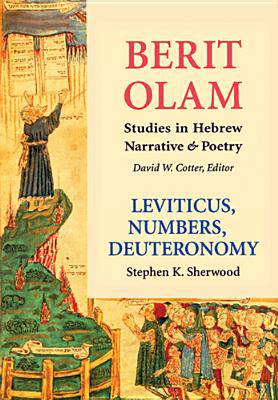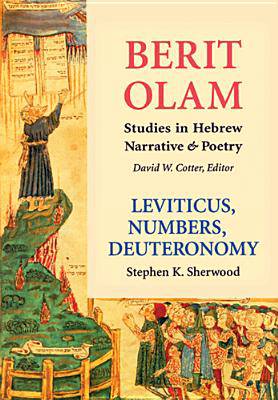
- Retrait gratuit dans votre magasin Club
- 7.000.000 titres dans notre catalogue
- Payer en toute sécurité
- Toujours un magasin près de chez vous
- Retrait gratuit dans votre magasin Club
- 7.000.0000 titres dans notre catalogue
- Payer en toute sécurité
- Toujours un magasin près de chez vous
Description
Many good intentions to read the entire Bible have foundered on the rocks of Leviticus, Numbers, and Deuteronomy. Do these books have literary qualities? How does the storyteller tell the story? In Leviticus, Numbers, Deuteronomy, Stephen Sherwood, C.M.F., applies the tools of narrative criticism to look for the literary qualities of these three biblical books.
Sherwood identifies the narrative art of Leviticus, Numbers, and Deuteronomy not only in such colorful stories as the Sabbath breaker, the threat from Sihon and Og, the deaths of Nadab and Abihu, the story of Balaam, the bronze serpent, Aaron's rod, Miriam's leprosy, and the water from the rock, but also through the extended discourses made by characters in the story. Sherwood studies the voices of several of these characters: the narrator, the Lord, Moses, Aaron, the Israelites, Balaam and Barak, and others, to see how each is characterized" by their words and actions.
In Leviticus, Numbers, Deuteronomy, Sherwood also shows how each of the three books has its own characteristics as part of a larger story. Leviticus deals mainly with divine speech. Numbers also contains divine speech but the voices of Moses and the narrator are more recurrent. Deuteronomy is presented in the form of a farewell speech of Moses before his death. The story is then retold from Moses' point of view, with different emphases and even some changes.
Chapters are *General Introduction, - *Leviticus, - *Numbers, - and *Deuteronomy. - Each chapter contains a general introduction to a biblical book which is followed by notes which make observations on the literary qualities of smaller units of each book.
Spécifications
Parties prenantes
- Auteur(s) :
- Editeur:
Contenu
- Nombre de pages :
- 328
- Langue:
- Anglais
- Collection :
Caractéristiques
- EAN:
- 9780814650462
- Date de parution :
- 01-02-02
- Format:
- Livre relié
- Format numérique:
- Genaaid
- Dimensions :
- 160 mm x 237 mm
- Poids :
- 644 g

Les avis
Nous publions uniquement les avis qui respectent les conditions requises. Consultez nos conditions pour les avis.






